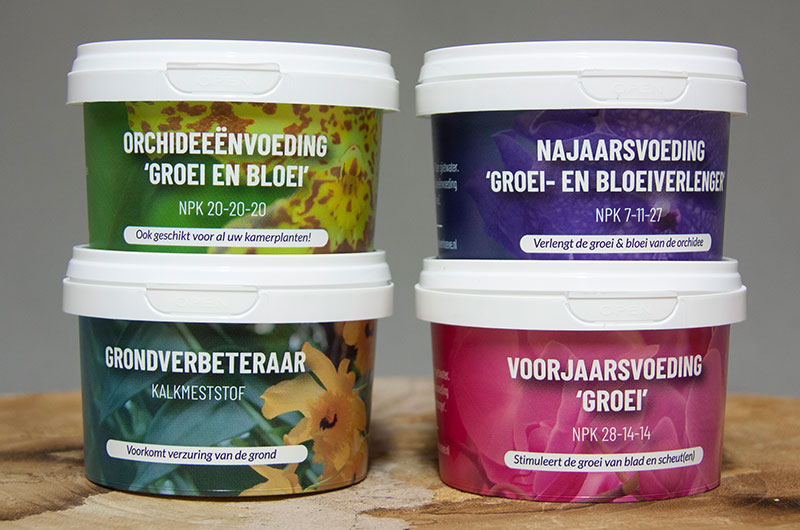
How do I care for my Phalaenopis?
Phalaenopsis is also referred to as the Cooktown Orchid. It is native to the tropical rainforests of Asia, New Guinea, and Australia. There are good reasons for this orchid being the favourite adornment for Dutch living rooms. Phalaenopsis is namely typified by being easy to care for, a long flowering period (sometimes more than three consecutive months), and being one of the few species of orchids that produces more than one flower stem per year.
Light
In a bright, but shaded spot, but no direct sunlight.
temperature
Phalaenopsis loves living room temperatures. The minimum temperature for this orchid is 15 degrees Celsius. Temperatures that are too low or an excess of water can cause the orchid’s buds to fall off and the roots to deteriorate.
water
This orchid should not be overwatered. It is sufficient to water it once every seven to nine days. Water phalaenopsis only once its soil is almost dry.

Fertiliser orchid
- Twice per month, feed Phalaenopsis our special orchid fertiliser ‘Groei en bloei’. One level teaspoon per one litre of water. In February, May, and September, sprinkle one level teaspoon of ‘Grondverbeteraar’ (soil improver) once over the potting mix. The orchid does not require fertiliser from November up to and including January. Both products are sold in our shop.
Spraying flower buds
The humidity in a home can be low during the winter and summer months. Spray the smallest buds daily to prevent them from drying out and not flowering.
soil
It is important to replant Phalaenopsis once every three to four years in orchid potting mix. For this orchid, Pantropica has put together a well-aerated mix of bark, coco, and peat. This mix is available at our shop.


After flowering
Cut the stem of the flower at one centimetre above the third node when it is still carrying two or three flowers. The stem will grow again and produce new flowers after four to six months.
Tip for repotting
Phalaenopsis can be repotted in a larger pot if the orchid’s roots are healthy. However, if the roots are soft and/or decayed, it is recommended to remove those parts and to repot the orchid in the same pot. Tearing/dividing is also an option once phalaenopsis has grown beyond the edge of the pot. Divide a single plant into two plants, at the most. Next, place these plants in a pot of the same size.
